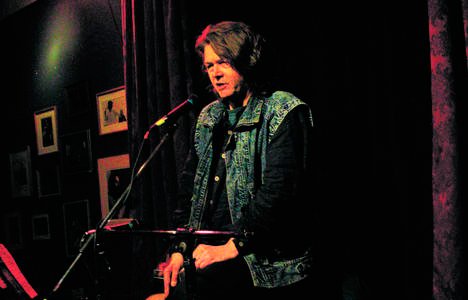
What do big banks and art have in common? They’re both too big to fail. They both need bailouts, or as the financial community likes to call them, liquidity injections.
The difference is, in the arts they’re known as grants. Even if an artist is lucky enough to get one of the biggest ones there are, it’s just enough for survival (average annual wage of a Canadian artist: $23,500), but not enough to breed public confidence in the art bubble. Whatever word you use, artists do with their stimulus money what the banks don’t: they spend it, usually locally and often immediately.
I write this as the city discusses proposals to cut its arts budget by 10 per cent, which would mean paring over $1 million from the Toronto Arts Council’s grant-giving capability. In 2010, the TAC gave $10.3 million to 703 individual artists and arts organizations. Seventy-five per cent of that support was for amounts less than $10,000.
It takes a lot of little grants and fees and subsidies from diverse sources to keep the creative wheels rolling for culture toilers like myself. I like graffiti, but you can’t produce culture over the long term without sustenance. I’m grateful for having received help from the TAC many of my 15 books of poetry might not have come to fruition had they not had the support of the public purse.
In the banking sector, piles of money sits in vaults, uninvested. But I don’t hold onto my grant money or fees earned by my participation in the Ontario Arts Council’s Poetry In The Schools program. As soon as it hits my hand, it’s gone on to the next hand, spent on frivolous things like rent, food, paper, herbs and spices. This is poetry money rising up and tripling itself and then diving right back into the economy.
(If as a small side-beauty, poetry is transmitted directly by its creator to some students who may have been waiting all their life for just such a charge to light them up forever – bonus.)
The TAC says arts and culture generate $9 billion every year in the local economy. I can almost see the currency sparkling in the air, going round and round. An arts grant can be very bubble-building.
Most of our Canadian musical stars have been bubble riders, in some cases through government agencies like the Ontario Arts Council’s popular music program, but much more frequently through FACTOR, a pool of money donated by media giants and the federal government to stimulate Canadian content for the media via loans with generous terms. Arcade Fire, Avril Lavigne, Alanis Morissette, Alannah Myles (and that’s just the As) all made their way to international success with some assistance from this body.
In fact, the whole sizable impact of Canadian music on world culture might not have happened without this publicly funded investment. And for every loon paid by FACTOR, another $1 or $2 winds up being raised to complete the funding.
That’s how it is with a lot of grants. The TAC says every dollar Toronto invests in arts organizations attracts $17 more from private and public sources. And it points out that a cut of 10 per cent can spiral into a loss of even more funding if it prevents fundraising, reduces staff and financial capacity or means fewer programs and reduced sponsorship or government support.
People have such an absolute faith in art. “If it’s good, it will happen whether it gets funded or not.” Not true. I don’t imagine those artists who created the images in the prehistoric caves of Lascaux and Altamira were necessarily recipients of arts grants. But they were key to their communities. Shakespeare had a patron. Sometimes even the words of the prophets that are written on the subway walls are underwritten by arts grants.
So was some of our best-loved literature. Combined arts councils must’ve subsidized the writing of, oh, maybe 1,000 novels since the 60s. Some of them, works by authors like Margaret Atwood, Michael Ondaatje and Alice Munro, have gone on to world renown. Perhaps you’ve read Leonard Cohen’s lovely first collection, Let Us Compare Mythologies, published in 1956. There you’ll see in the acknowledgments a thank-you to the Canada Council. Hallelujah.
Last May, city council voted to increase arts funding to $25 per capita – but, the TAC points out, the budget now being discussed reduces the arts investment to just $17, less than other major cities. “Great art and artists take years to achieve commercial success today’s funding enables tomorrow’s art.”
My point exactly.
Robert Priest’s latest book is Reading The Bible Backwards (ECW Press, 2008).
news@nowtoronto.com












